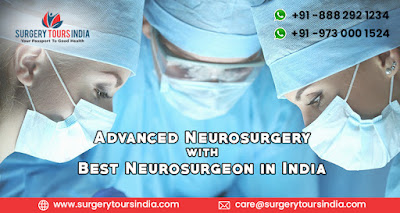WHAT IS CAROTID ARTERY DISEASE?
Carotid arteries are responsible for carrying oxygen rich blood from the heart to the brain and heart. These arteries are located on each side of the neck and are very crucial as they are responsible for supplying blood to the big front portion of the brain. This is considered as a very crucial part as personality, motor functions, speech, sensory and thinking exists here.When there is blockage or narrowing of the carotid artery caused by the accumulation of the plaque is known as carotid artery disease. The accumulation of the plaque blocks the supply of the blood into the brain and increases the risk of stroke. This gradual build-up is due to diabetes, high blood cholesterol, tobacco and high blood pressure. Transient Ischemic Attacks (mini-strokes) or a stroke are caused by carotid artery disease.
Symptoms of Carotid Artery Disease
There are no symptoms of carotid artery disease in its early stages. This disease is noticed when the brain is deprived of blood and resulting into TIA (Transient Ischemic Attacks) or s stroke. Symptoms of TIA include -Sudden or severe headache without any causeWeakness or sudden numbness in the limbs or face. This is usually only on one side of the body.Loss of balance or dizzinessSudden trouble in seeing in one or both eyesTrouble in understanding and speaking
Causes of Carotid Artery Disease
When damage is caused to the inner layers of the carotid arteries results in carotid artery disease. Following are the factors contributing to the damage are -High levels of sugar in the blood caused by diabetes or insulin resistanceSmokingHigh blood pressureHigh levels of cholesterol and specific fats in the blood
Best Orthopedic Treatment In India

Orthopedic Surgery is the branch of surgery concerned with conditions involving the musculoskeletal system. Orthopedic surgeons use both surgical and nonsurgical means to treat musculoskeletal trauma, spine diseases, sports injuries, degenerative diseases, infections, tumors, and congenital disorders.
The word Orthopedics comes from two Greek words, ortho, meaning straight and pais, meaning child. Originally, orthopedic surgeons dealt with bone deformities in children, using braces to straighten the child's bones. With the development of anesthesia and an understanding of the importance of aseptic methods in surgery, orthopedic surgeons extended their role to include surgery involving the bones and related nerves and connective tissue.
Orthopedic sometimes spelled orthopaedic surgery is surgery performed by a medical specialist, such as an orthopedist or orthopedic surgeon, trained to deal with problems that develop in the bones, joints, and ligaments of the human body.
Some Of The Conditions And Diseases An Orthopaedic Surgeon Treats Include:
- Abnormalities of the fingers and toes.
- Back pain, ruptured disks, sciatica and scoliosis.
- Bone tumors, muscular dystrophy and cerebral palsy.
- Club foot, bunions, bow legs, knock knees and unequal leg length.
- Fractures and dislocations.
- Growth abnormalities.
- Osteoarthritis.
- Osteoporosis.
- Rheumatoid arthritis.
- Sports or work-related injuries.
- Tendon injuries, pulled muscles, bursitis and torn cartilage.
- Torn ligaments, sprains and strains.
What Is Neurology?
Neurology is primarily concerned with disorders of the nervous system and brain. The neurological disorders include diseases involving autonomic, central and peripheral nervous systems. It may also include muscles, blood vessels and nerves. Neurological diseases include diseases of peripheral muscles and nerves, neuromuscular junctions and spinal cord. A neurologist is a physician who practices neurology. The disorders of spinal cord, nerves and the brain are treated by a neurologist that include -
Epilepsy
Tremor
Stroke
Parkinson's disease
Amyotrophic lateral sclerosis
Heartache
Pain
Alzheimer's disease
Sleep disorders
Spinal cord and brain injuries
Multiple sclerosis
Peripheral nerve disorders
Pediatric Neurology
Pediatric Neurology is specifically concerned with neurological problems with those children who are under 18 years of age. It has been seen that a large number of children are suffering from neurological diseases and epilepsy. The primary concern of a pediatric neurologist is to treat disorders of peripheral, central and autonomous nervous systems. Their primary role is to confront the unique symptoms of epilepsy in children.
Bone Marrow Transplant Procedure
A bone marrow transplant depends on the following conditions such as a patient's ability to tolerate certain medications, the type of transplant and the disease that requires a transplant. The procedure
includes the following -The preparation of a bone marrow transplant involves high doses of radiation therapy and/or chemotherapy. This is required for treating a specific disease and also to create a sufficient room in the bone marrow for the new cells to develop. Myeloablative or ablative is the name given to this therapy due to its effect on the bone marrow. Majority of blood cells in the body are produced by the bone marrow. The marrow becomes empty when the ablative or Myeloablative therapy stops the cell production. The new stem cells require an empty marrow so that they can grow and simultaneously establish themselves as new blood cell production system.
The marrow transplant is given from the central venous catheter in the bloodstream after administering radiation therapy and/or chemotherapy. This process is not considered as a surgical procedure. The stem cells start to grow into healthy blood cells by making their way into the bone marrow.
A supportive care is offered after the transplant for preventing complications, infections and side effects. This care involves providing a clean environment, frequent blood tests, and daily weigh-ins, strict measurement of fluid input and output, and monitoring of vital signs.

